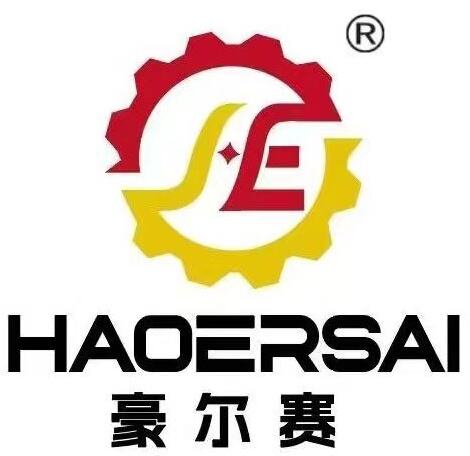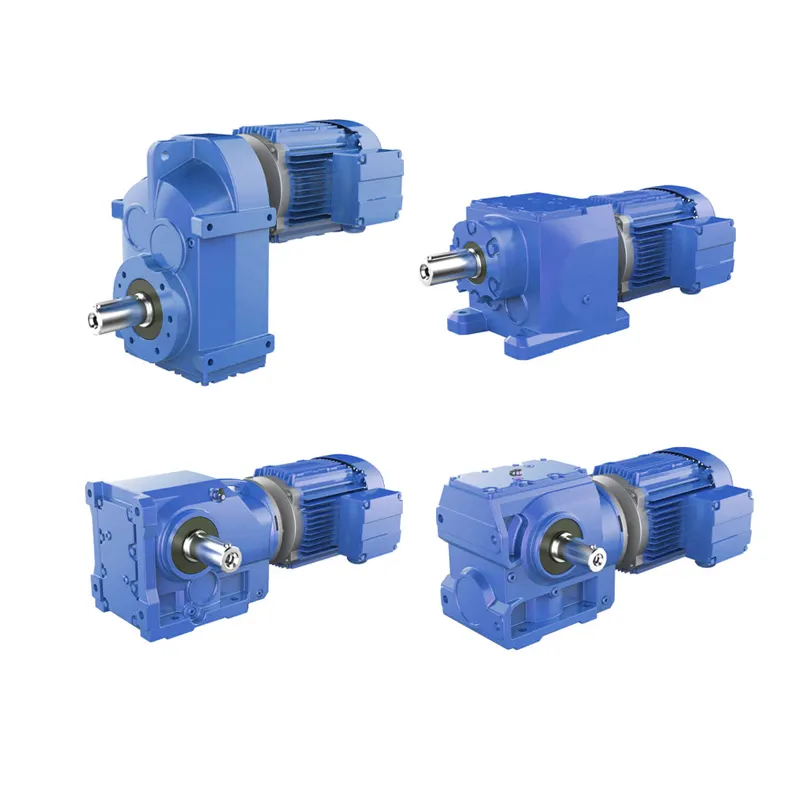Compreendendo o Poder da Vantagem Mecânica em Aplicações Industriais
No mundo das máquinas industriais e da transmissão de potência, redutores de engrenagem surgem como componentes cruciais que transformam fundamentalmente a forma como a energia mecânica é utilizada. Um redutor de velocidade, também conhecido como redutor ou caixa de engrenagens, atua como um dispositivo mecânico que otimiza a velocidade de rotação enquanto simultaneamente amplifica a saída de torque. Esta peça sofisticada de engenharia permite que as máquinas operem de forma mais eficiente, tornando possível alcançar uma transmissão de potência maior com menos energia de entrada.
O princípio por trás dos redutores de velocidade reside na sua capacidade de manipular a relação entre velocidade e torque. Ao reduzir a velocidade de saída em relação à velocidade de entrada, esses dispositivos geram um aumento proporcional no torque, seguindo as leis fundamentais da vantagem mecânica. Essa transformação é essencial em inúmeras aplicações industriais, desde equipamentos de manufatura até sistemas de energia renovável.
Componentes Principais e Princípios Mecânicos
Elementos Essenciais de Redutor de Engrenagem Sistemas
No coração de cada redutor de velocidade estão componentes precisamente projetados que funcionam em harmonia. Os elementos principais incluem eixos de entrada e saída, conjuntos múltiplos de engrenagens, rolamentos e uma estrutura de carcaça. Cada configuração de redutor é cuidadosamente projetada para alcançar relações específicas de redução de velocidade, mantendo ao mesmo tempo a eficiência ideal na transmissão de torque.
A carcaça desempenha um papel crucial na proteção dos componentes internos e no fornecimento adequado de lubrificação. Redutores de alta qualidade possuem carcaças robustas feitas de ferro fundido ou alumínio, projetadas para suportar ambientes industriais severos, mantendo ao mesmo tempo o alinhamento correto de todos os componentes internos.
Princípios de Operação e Transmissão de Potência
O funcionamento fundamental de um redutor de velocidade baseia-se na interação entre engrenagens de tamanhos diferentes. Quando uma engrenagem menor (pinhão) aciona uma engrenagem maior, ocorre uma redução da velocidade enquanto se multiplica a saída de torque. Essa vantagem mecânica é obtida por meio de relações de transmissão cuidadosamente calculadas, que podem ser organizadas em várias configurações dependendo dos requisitos específicos da aplicação.
Os projetos modernos de redutores de velocidade incorporam materiais avançados e técnicas de fabricação de precisão para minimizar perdas por atrito e maximizar a eficiência na transmissão de potência. O uso de engrenagens helicoidais, por exemplo, proporciona operação mais suave e menor ruído em comparação com as engrenagens retas tradicionais, além de suportar cargas mais elevadas de forma mais eficaz.
Maximizando a Eficiência por meio do Projeto
Geometrias e Materiais Avançados para Engrenagens
A eficiência de um redutor de velocidade depende muito do projeto e da qualidade dos seus dentes engrenados. Geometrias avançadas de engrenagens, incluindo perfis de dente otimizados e acabamento superficial preciso, reduzem significativamente o atrito e o desgaste. Materiais como aço cementado e ligas de alta qualidade garantem durabilidade ao mesmo tempo que mantêm um desempenho ideal sob cargas pesadas.
A inovação no projeto de redutores de velocidade continua expandindo os limites de eficiência. Técnicas modernas de fabricação permitem modificações na microgeometria que compensam a deflexão sob carga, assegurando padrões consistentes de contato e menores perdas de potência ao longo de toda a faixa de operação.
Sistemas de Lubrificação e Gestão Térmica
A lubrificação adequada é essencial para manter alta eficiência em redutores de velocidade. Sistemas avançados de lubrificação garantem que todos os componentes móveis recebam fluxo suficiente de óleo, reduzindo o atrito e controlando a geração de calor. A seleção de lubrificantes apropriados, combinada com sistemas eficientes de refrigeração, ajuda a manter temperaturas ideais de operação e prolonga a vida útil do equipamento.
Alguns redutores de velocidade incorporam sistemas sofisticados de circulação de óleo que monitoram e mantêm ativamente as condições adequadas de lubrificação. Esses sistemas podem incluir elementos de filtração e sensores de temperatura para garantir desempenho consistente e prevenir desgaste prematuro de componentes críticos.
Aplicações e Otimização de Desempenho
Estratégias de Implementação Industrial
A implementação bem-sucedida de redutores de velocidade exige consideração cuidadosa dos requisitos específicos da aplicação. Fatores como velocidade de operação, características da carga, ciclo de trabalho e condições ambientais desempenham papéis cruciais na seleção da configuração apropriada do redutor de velocidade. Indústrias que vão da mineração ao processamento de alimentos dependem de redutores de velocidade corretamente dimensionados para otimizar suas operações.
A integração de redutores de velocidade em sistemas existentes frequentemente apresenta oportunidades para melhorias significativas de eficiência. Ao analisar métricas de desempenho atuais e compreender os requisitos do processo, engenheiros podem especificar redutores de velocidade que não apenas atendem às necessidades imediatas, mas também oferecem capacidade para expansão futura.
Práticas de Monitoramento e Manutenção
Para manter a eficiência máxima, os redutores de velocidade exigem monitoramento regular e manutenção preventiva. Sistemas modernos de monitoramento podem acompanhar em tempo real parâmetros-chave, como temperatura, vibração e condição do óleo, permitindo que os operadores identifiquem problemas potenciais antes que levem à falha do equipamento.
A implementação de um programa abrangente de manutenção garante que os redutores de velocidade continuem operando nos níveis de eficiência para os quais foram projetados. Isso inclui análise regular do óleo, inspeção de selos e rolamentos e verificações periódicas de alinhamento para evitar perdas desnecessárias de potência e prolongar a vida útil do equipamento.

Tendências Futuras e Inovações
Integração Inteligente e Indústria 4.0
O futuro da tecnologia de redutores de velocidade está sendo moldado pela integração de sensores inteligentes e recursos de conectividade. Esses avanços permitem o monitoramento em tempo real dos parâmetros de desempenho e capacidades de manutenção preditiva, ajudando a otimizar a operação e prevenir paradas inesperadas.
Os princípios da Indústria 4.0 estão impulsionando o desenvolvimento de redutores de velocidade com inteligência integrada. Esses sistemas inteligentes podem adaptar-se a condições operacionais variáveis e comunicar-se com outros equipamentos na linha de produção, garantindo desempenho ideal em todo o sistema.
Sustentabilidade e Eficiência Energética
As considerações ambientais estão influenciando cada vez mais o projeto e a aplicação de redutores de velocidade. Os fabricantes estão desenvolvendo soluções mais eficientes energeticamente, que reduzem o consumo de energia ao mesmo tempo em que mantêm alta saída de torque. Isso inclui o uso de materiais avançados e projetos otimizados que minimizam perdas em todo o sistema de transmissão de potência.
O foco na sustentabilidade estende-se ao uso de lubrificantes e materiais ecologicamente corretos, que reduzem o impacto ambiental das operações dos redutores de velocidade, mantendo ao mesmo tempo altos padrões de desempenho.
Perguntas Frequentes
Quais fatores determinam a eficiência de um redutor de velocidade?
A eficiência de um redutor de velocidade é influenciada por vários fatores-chave, incluindo geometria das engrenagens, qualidade dos materiais, eficácia do sistema de lubrificação, condições operacionais e práticas de manutenção. O projeto dos perfis dos dentes, a qualidade dos rolamentos e o dimensionamento adequado para a aplicação também desempenham papéis cruciais na determinação da eficiência geral.
Com que frequência um redutor de velocidade deve ser revisado?
Os intervalos regulares de manutenção dependem das condições operacionais, mas normalmente incluem inspeções visuais mensais, verificações trimestrais do nível de óleo e manutenção completa anual. Aplicações pesadas podem exigir manutenção mais frequente, enquanto operações leves podem estender esses intervalos com base em dados do sistema de monitoramento.
Quais são os sinais de um redutor de velocidade com falha?
Indicadores comuns incluem ruídos ou vibrações incomuns, aumento da temperatura de operação, vazamento de óleo e desempenho reduzido. Sistemas modernos de monitoramento podem detectar sinais precoces de alerta por meio de análise de vibração, monitoramento do estado do óleo e rastreamento de temperatura, permitindo a manutenção preventiva antes da falha ocorrer.

